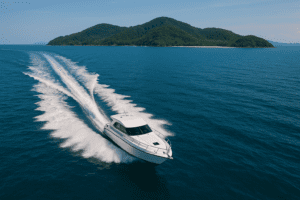Estimated reading time: 12 minutes
Key Takeaways
- Prime Season: Visit January-April for best visibility (20-30m) and marine life encounters
- Top Snorkel Spots: Koh Haa and Koh Rok offer pristine coral gardens and guaranteed turtle sightings
- All Skill Levels: From shallow bay snorkeling to advanced dive sites with manta rays and whale sharks
- World-Class Diving: Hin Daeng & Hin Muang rank among Southeast Asia’s best sites for large marine life
- Budget Planning: Full-day snorkel tours cost 1,500-2,500 THB; diving experiences 3,800-4,500 THB
Table of Contents
- Why Koh Lanta is an Underwater Playground
- The Best Snorkel Spots Koh Lanta Has to Offer
- World-Class Koh Lanta Dive Sites for Every Level
- Planning Your Adventure: Snorkel Tours Koh Lanta
- Beyond Snorkeling: Other Underwater Activities Koh Lanta
- Meet the Locals: Marine Life Koh Lanta
- Practical Tips for a Safe and Eco-Friendly Trip
- Sample Itineraries & Budgeting Your Trip
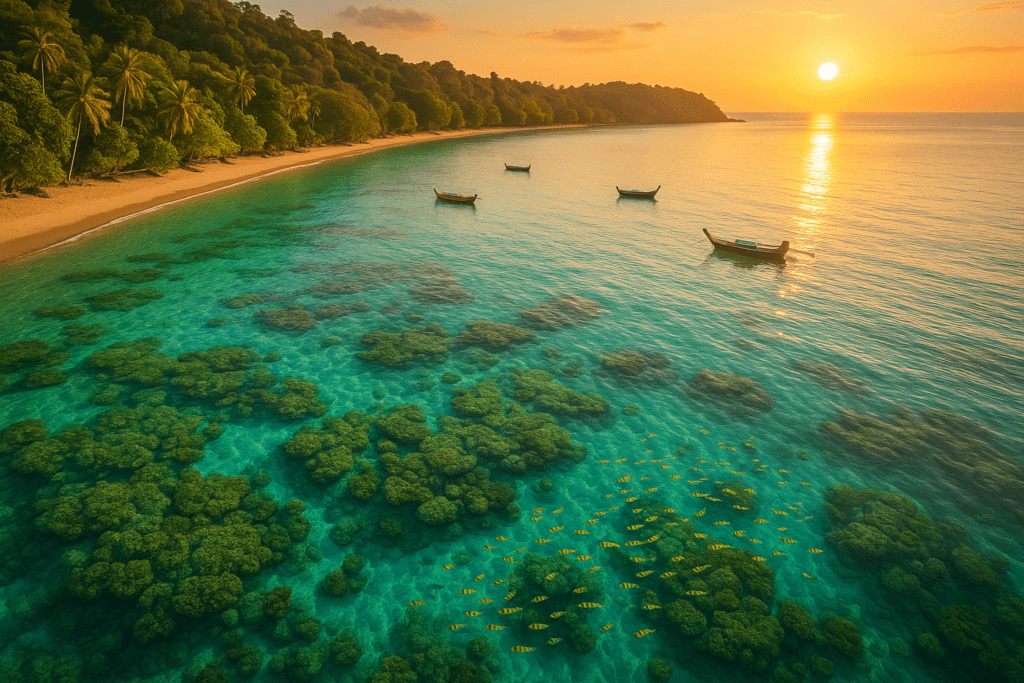
Picture this: you’re floating above a pristine coral garden, watching sea turtles glide gracefully beneath you while schools of tropical fish swirl in every direction. Welcome to Koh Lanta, Thailand’s hidden underwater paradise in the Andaman Sea.
Unlike the crowded waters around Phuket or Koh Phi Phi, Koh Lanta offers something increasingly rare—authentic, unspoiled marine experiences. This is your ultimate guide to Koh Lanta snorkeling, where crystal-clear waters meet vibrant coral reefs, and every dive reveals new wonders. Plus, beyond the underwater thrills, Koh Lanta has even more to offer—check out our Top 10 Things to Do in Koh Lanta for a full island adventure plan.
You’re about to discover the best snorkel spots Koh Lanta has to offer, from beginner-friendly bays to world-class Koh Lanta dive sites that attract marine life photographers from around the globe. We’ll cover everything from choosing the perfect snorkel tours Koh Lanta to understanding what makes the underwater activities Koh Lanta so special. And trust me, once you learn about the incredible marine life Koh Lanta harbors—including manta rays and whale sharks—you’ll be booking your trip immediately.
Why Koh Lanta is an Underwater Playground
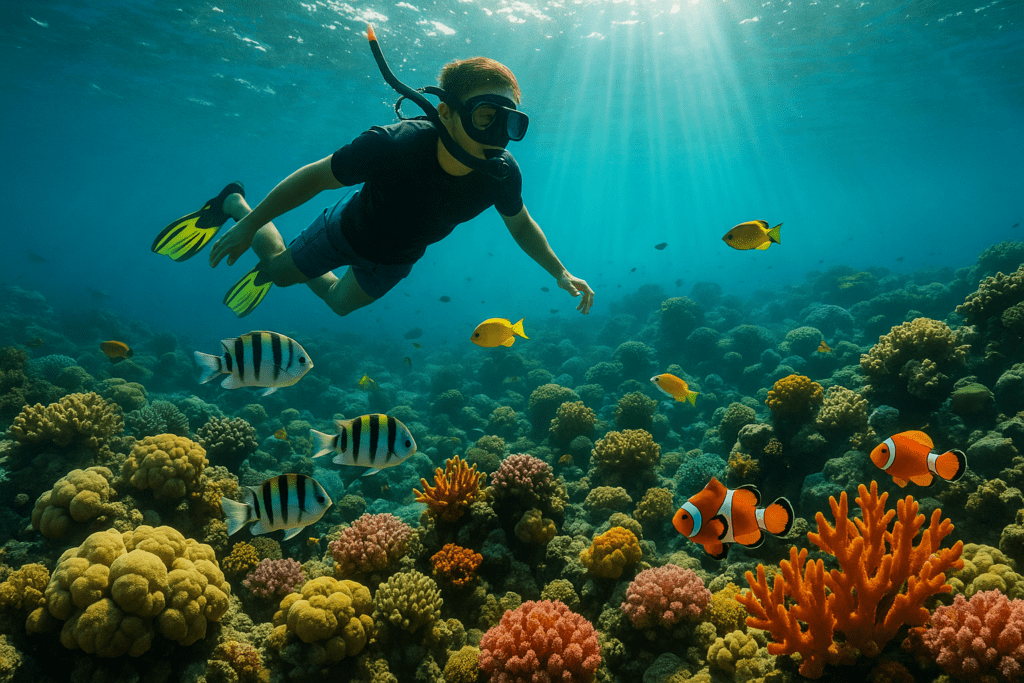
A Spectrum of Adventure
What sets Koh Lanta apart is its incredible range of underwater activities Koh Lanta caters to every skill level imaginable. Families with young kids can enjoy shallow bay snorkeling where the water barely reaches your waist, while adrenaline junkies can tackle advanced scuba diving Koh Lanta sites featuring dramatic wall dives and historic wrecks. It’s rare to find a destination that genuinely works for both your nervous first-timer friend and that dive-obsessed cousin who won’t shut up about their latest certification. Learn more about Koh Lanta’s diving opportunities for detailed information about courses and sites available.
The Koh Lanta Advantage
Here’s where Koh Lanta really shines compared to Thailand’s other diving hotspots. While Koh Tao gets credit for cheap certifications and Phuket boasts convenience, Koh Lanta delivers something more valuable: quality. Water visibility here regularly hits 20-30 meters during peak season—that’s almost twice what you’ll get at busier locations. The coral reefs are healthier, the fish populations more abundant, and you won’t spend half your dive dodging other groups.
Diving in Koh Lanta feels like stepping back in time to when Thailand’s underwater world was less discovered. You might have an entire reef section to yourself, which is practically unheard of elsewhere.
Best Time to Visit
Timing your trip right makes all the difference. The prime season runs from October to May, but if you want the absolute best conditions, plan for January through April. During these months, the seas are mirror-calm, visibility peaks, and marine life activity hits its highest levels.
Avoid the monsoon season (June through September) unless you enjoy choppy seas and murky water. Many dive centers actually close during these months because conditions become too challenging for safe underwater exploration.
The Best Snorkel Spots Koh Lanta Has to Offer
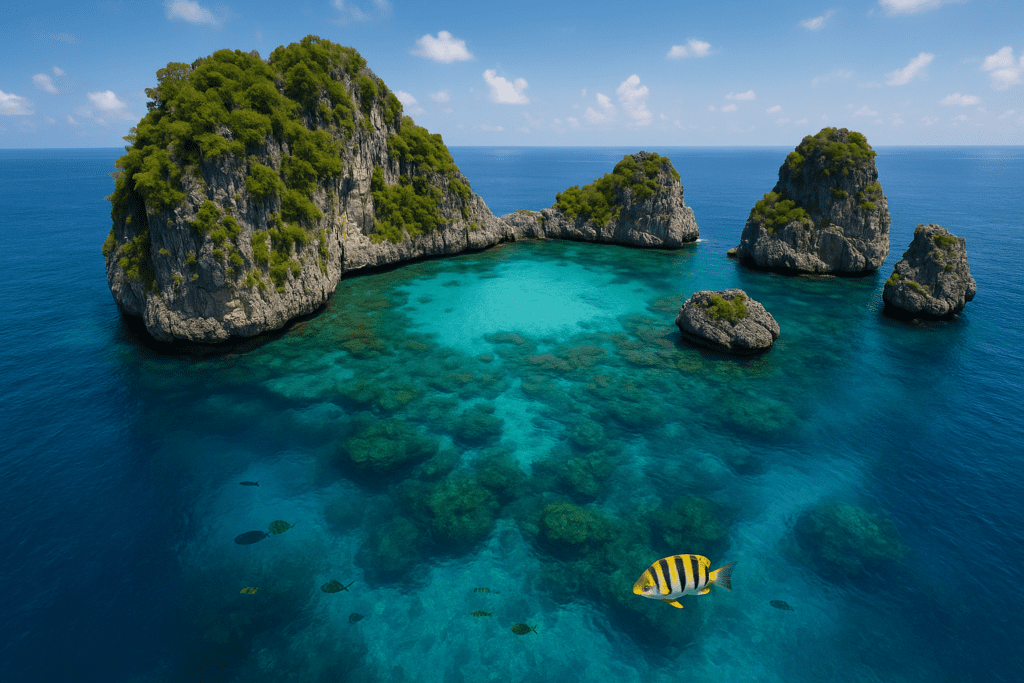
When selecting the top locations for Koh Lanta snorkeling, I’ve focused on three key factors: coral health, fish diversity, and accessibility. These spots represent the cream of the crop.
Koh Haa (The Five Islands)
If you only visit one snorkeling location, make it Koh Haa. This cluster of five limestone islands creates a natural wonderland with the famous “crystal lagoon” at its center—a perfectly protected area where visibility often exceeds 30 meters.
What makes Koh Haa special is how it serves both snorkelers and divers beautifully. While divers explore the deeper caverns and swim-throughs, snorkelers can enjoy the shallow coral gardens teeming with life. Sea turtles are regular visitors here, and the fish populations are simply staggering. I’ve seen everything from tiny cleaner fish to massive schools of barracuda passing through.
Koh Rok (The Twin Islands)
Koh Rok represents pristine marine wilderness at its finest. These twin islands—Koh Rok Nok and Koh Rok Nai—are far enough from the mainland to maintain their untouched character. The coral gardens here are some of the most vibrant I’ve encountered in Southeast Asia.
Turtle sightings are almost guaranteed at Koh Rok. During my last visit, we encountered three different green turtles in a single snorkeling session. The remote location means these reefs see less human impact, resulting in healthier coral coverage and more natural fish behavior.
Ao Nui
Perfect for families and nervous beginners, Ao Nui offers everything you want in a first snorkeling experience. The water stays shallow and calm, protected from strong currents, while the coral formations are close enough to the surface for easy viewing.
Don’t let the “beginner-friendly” label fool you—the marine life here is abundant. Hard corals create colorful underwater gardens, and the fish populations include plenty of the classic tropical species that make snorkeling magical.
Bamboo Bay (Ao Mai Pai)
Sometimes convenience matters, and Bamboo Bay delivers accessibility without sacrificing quality. Located on Koh Lanta’s southern coast, you can reach this spot independently without joining a tour group.
The snorkeling here works well for a quick session between other activities. While you won’t see the mega-fauna of more remote locations, the coral health and fish diversity make it a worthy stop.
For ultimate freedom to explore Koh Lanta’s southern beaches and reach tour departure points on your own schedule, having your own transport makes a huge difference. Services like Byklo.rent make it easy to arrange a motorbike for your stay. For comprehensive travel insights, see our Koh Lanta Travel Guide 2025.
World-Class Koh Lanta Dive Sites for Every Level
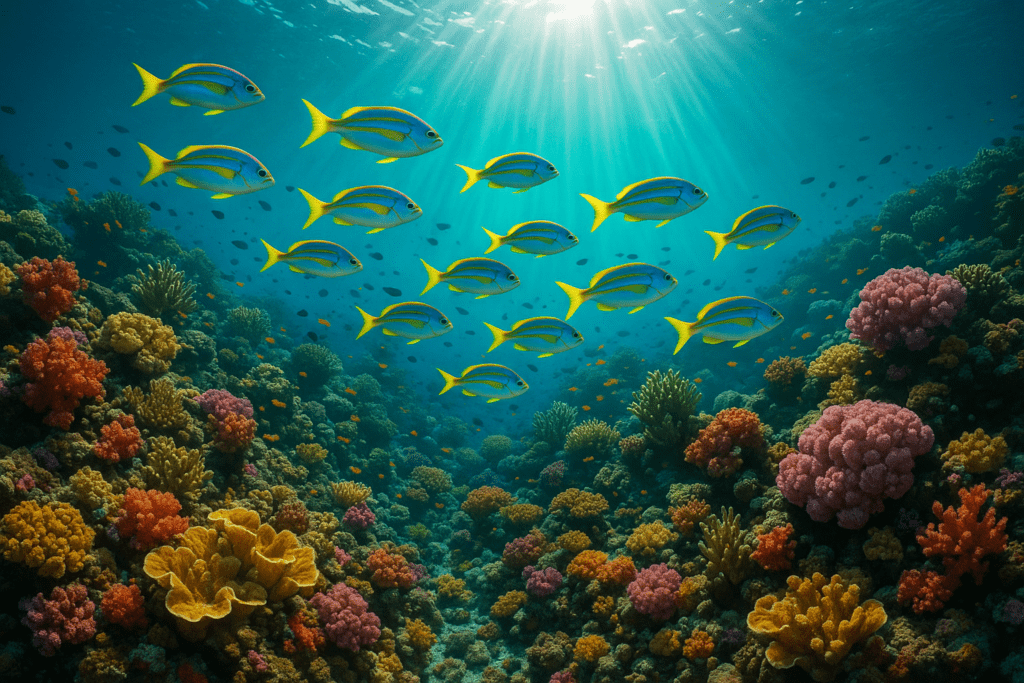
Introduction to Diving Options
Diving in Koh Lanta caters to everyone, from complete beginners taking their first underwater breaths to technical divers seeking challenging deep-water encounters. The island’s dive centers offer “try-dive” experiences for nervous newcomers, full PADI certification courses for those ready to commit, and advanced specialty training for certified divers looking to expand their skills.
Hin Daeng & Hin Muang (Advanced)
These submerged pinnacles represent Thailand’s premier deep-diving destinations. Hin Daeng (“Red Rock”) and Hin Muang (“Purple Rock”) rise from the deep blue, their surfaces covered in spectacular soft corals that create an almost alien underwater landscape.
These sites demand Advanced Open Water certification due to potential strong currents and deeper profiles, but the rewards are extraordinary. This is where you’ll encounter the big stuff—manta rays gliding overhead, whale sharks cruising past, and massive schools of pelagic fish that seem to go on forever.
The sites can be challenging. Currents change quickly, and the depth means shorter dive times. But experienced divers consistently rate these among Southeast Asia’s best locations for large marine life encounters.
Koh Bida Nok & Koh Bida Nai (All Levels)
These limestone towers offer incredible versatility, with dive sites suitable for beginners in shallow areas and more challenging options for advanced divers. The underwater topography is fascinating—caves, swim-throughs, and sloping reefs create diverse environments within single dive sites.
Leopard sharks are the stars here. These harmless bottom-dwellers often rest on sandy patches between coral formations, and patient divers can approach quite close for photos. The variety of marine life at Koh Bida makes every dive feel like an underwater safari.
The King Cruiser Wreck (Advanced)
For wreck diving enthusiasts, the King Cruiser offers a unique challenge. This 85-meter passenger ferry sank in 1997 and has transformed into a thriving artificial reef. The wreck sits in about 30 meters of water, making it accessible to Advanced Open Water divers.
What makes this wreck special isn’t just its size, but how marine life has colonized every surface. Massive schools of fish use the structure for shelter, while soft corals and sponges have created colorful growth patterns across the hull.
Finding a Dive School
Koh Lanta hosts several reputable PADI centers, including Scubafish and Andaman Dive Adventure. Expect to pay around 3,800-4,500 THB for a day of fun dives, while certification courses cost more depending on the level. These operations maintain high safety standards with modern boats, experienced guides, and well-maintained equipment. Read more about diving conditions and schools for current pricing and availability.
Planning Your Adventure: Snorkel Tours Koh Lanta
Tour Types
Snorkel tours Koh Lanta come in several varieties, each suited to different preferences and budgets. Full-day trips typically visit 2-3 locations and include lunch, while half-day options focus on single destinations closer to shore.
You can choose between private longtail boat charters for small groups and larger speedboat tours that accommodate more passengers. Private charters offer flexibility in timing and destinations but cost more per person. Group tours provide better value and social interaction but follow fixed schedules.
A Typical Day
Picture this: your hotel pickup arrives around 8:00 AM, and you’re at the pier by 8:30. After a safety briefing and gear fitting, you’re heading toward your first snorkel spot by 9:00.
The first stop usually lasts about an hour, giving you time to get comfortable with your gear and explore the underwater landscape. Then it’s on to a second location with different coral formations or marine life. Lunch typically happens on a pristine beach—think white sand, swaying palms, and freshly prepared Thai food.
The afternoon brings a third snorkel stop before heading back to shore around 4:00 PM. Good operators keep group sizes manageable, usually under 15 people, ensuring everyone gets attention from guides and space to enjoy the experience.
What’s Included
Most tours provide everything you need: hotel transfers, snorkeling gear (mask, snorkel, fins), life jackets, safety briefings, lunch, fresh fruit, and drinking water. Some operators include waterproof cameras or underwater photography services for an additional fee.
The gear quality varies between operators, which is why bringing your own well-fitting mask and snorkel can improve your experience significantly.
Recommended Operators
Scubafish has built a solid reputation for both diving and snorkeling tours, while Phoenix is a local favorite known for smaller group sizes and personalized service. Both operate from main beach areas with convenient pickup services. Check current tour offerings on TripAdvisor for recent reviews and booking options.
Beyond Snorkeling: Other Underwater Activities Koh Lanta
Get Certified in Scuba Diving Koh Lanta
Koh Lanta’s calm conditions and diverse sites make it an ideal place to earn your scuba certification. The PADI Discover Scuba Diving program lets complete beginners try diving in a single day, while the full Open Water course takes 3-4 days and provides global certification.
For already-certified divers, specialty courses add new skills and experiences. Night diving reveals a completely different underwater world, while advanced deep diving and wreck diving courses open up Koh Lanta’s most challenging sites.
Freediving
This increasingly popular discipline teaches breath-holding techniques and natural underwater movement. Several schools on Koh Lanta offer freediving courses, from basic breath-hold training to advanced competitive techniques.
Freediving creates a more intimate connection with marine life since you’re not surrounded by scuba gear and bubbles. Many divers find it meditative and peaceful compared to traditional scuba diving.
Niche Experiences
Underwater photography workshops teach composition, lighting, and marine life behavior techniques. Night dives reveal creatures you’ll never see during the day—hunting octopi, sleeping parrotfish, and bioluminescent plankton that sparkle when disturbed.
Family-Friendly Options
Not everyone in your group needs to get in the water. Glass-bottom boat tours let non-swimmers observe marine life, while sea kayak trips often combine paddling with shallow-water snorkeling in protected lagoons.
These alternatives ensure everyone can participate in underwater activities Koh Lanta regardless of swimming ability or comfort level.
Meet the Locals: Marine Life Koh Lanta
Reef Dwellers
The marine life Koh Lanta showcases reads like a tropical fish catalog. Anemonefish (yes, “Nemo”) dart between their host anemones, while massive parrotfish crunch coral with their beak-like mouths. Angelfish and butterflyfish create moving art galleries against the coral backdrop.
Look closer and you’ll spot more elusive residents: seahorses clinging to soft corals, pipefish hiding among sea grass, and cleaning stations where larger fish queue up for grooming services from smaller cleaner fish. Discover more about Koh Lanta’s marine ecosystem for detailed species information.
The Big Stuff
Sea turtle encounters happen regularly around Koh Lanta. Green turtles and hawksbill turtles use these reefs for feeding and resting. Watching a turtle glide past, completely unbothered by your presence, never gets old.
Black-tip reef sharks patrol the reef edges—completely harmless to humans and actually a sign of healthy reef ecosystems. Blue-spotted stingrays hide in sandy patches, their electric-blue spots creating natural camouflage.
The Icons (Seasonal)
Here’s where Koh Lanta gets really exciting. Manta rays and whale sharks visit these waters, particularly at sites like Hin Daeng and Hin Muang. These gentle giants follow plankton blooms and current patterns that peak from late January through April.
Manta ray encounters are surreal—these creatures can span 4+ meters from wingtip to wingtip, yet move with incredible grace. Whale sharks, the world’s largest fish, occasionally cruise through deeper sites, creating lifetime memories for lucky divers and snorkelers.
Timing matters for these encounters. Peak season brings the best chances, but marine life follows its own schedule. That’s part of the magic—you never know what might appear on any given day.
Practical Tips for a Safe and Eco-Friendly Trip
Gear
While tour operators provide basic snorkeling equipment, bringing your own well-fitting mask and snorkel dramatically improves comfort and experience. Rental masks often leak or fog up, ruining what should be magical underwater moments.
Use only reef-safe sunscreen. Traditional sunscreens contain chemicals that damage coral reefs, contributing to bleaching and ecosystem destruction. Reef-safe alternatives protect your skin without harming marine life.
Safety First
Never snorkel alone—the buddy system saves lives. Even experienced swimmers can encounter unexpected situations, and having someone nearby provides crucial safety backup.
Stay aware of your surroundings, particularly current changes and weather conditions. Listen carefully to guide instructions and don’t venture beyond designated areas. Marine parks have boundaries for good reasons.
Protecting Paradise
Follow the golden rule: look but don’t touch. Coral reefs are living ecosystems that damage easily from human contact. Even gentle touches can harm coral polyps that take years to regrow.
Never stand on coral reefs, chase marine life, or remove anything from the underwater environment. Support dive operators with strong conservation ethics and marine park fees that fund reef protection programs.
These simple practices ensure future generations can enjoy the same underwater wonders you’re experiencing today.
Sample Itineraries & Budgeting Your Trip
One-Day Snorkel Blitz
For a single day of Koh Lanta snorkeling, book a full-day tour to either Koh Rok or Koh Haa. These trips typically run 1,500-2,500 THB per person and include hotel transfers, all gear, lunch, and visits to multiple snorkel sites.
Start early—most tours depart around 8:30 AM to reach the best sites before afternoon crowds and changing weather conditions. You’ll return tired but exhilarated around 4:00 PM with underwater memories to last a lifetime.
Two-Day Underwater Immersion
This combination maximizes your underwater time while sampling different experiences. Day one focuses on Koh Lanta snorkeling with a full-day tour. Day two introduces scuba diving Koh Lanta through either a Discover Scuba program for beginners or fun dives for certified divers.
Budget around 6,000-8,000 THB total for this combination, depending on diving certification levels and tour operators. The variety keeps things interesting while building your underwater confidence and skills.
Where to Stay & Getting Around
Base yourself near Klong Dao, Long Beach, or Kantiang Bay for easy access to tour operators and departure piers. These areas offer accommodation options from budget guesthouses to luxury resorts, all within reasonable distance of marine activity centers.
Having your own transportation transforms your Koh Lanta experience. Getting to early morning tour departures becomes stress-free, and you can explore different beaches between underwater adventures. Motorbike rental through platforms like Byklo.rent provides the freedom to create your own schedule and discover hidden coastal gems.
Conclusion
Koh Lanta delivers everything underwater enthusiasts dream about: pristine coral reefs, incredible marine life Koh Lanta encounters, and snorkel tours Koh Lanta plus Koh Lanta dive sites suitable for every skill level. Whether you’re floating above shallow coral gardens or diving deep walls in search of manta rays, these waters offer unforgettable experiences.
The combination of excellent visibility, healthy marine ecosystems, and professional tour operators makes Koh Lanta a standout destination in Thailand’s competitive diving and snorkeling scene.
Book your underwater adventure well in advance, especially during peak season (January-April) when demand is highest and conditions are optimal. The best tours and dive operators fill up quickly during these months.
Stay connected with local dive centers through their newsletters or social media accounts for real-time wildlife sighting reports and special tour announcements. Marine life follows seasonal patterns, but unexpected encounters happen regularly—and being plugged into the local network helps you capitalize on extraordinary opportunities.
For tips on getting to the island, see our How to Get to Koh Lanta guide, and don’t forget to rent a motorbike with Byklo.rent to explore at your own pace.
Frequently Asked Questions
When is the best time for snorkeling in Koh Lanta?
The best time for snorkeling in Koh Lanta is from January to April, when water visibility reaches 20-30 meters, seas are calm, and marine life activity peaks. Avoid the monsoon season (June-September) when conditions become choppy and visibility decreases significantly.
How much do snorkel tours in Koh Lanta cost?
Full-day snorkel tours typically cost 1,500-2,500 THB per person and include hotel transfers, equipment, lunch, and visits to multiple locations. Half-day tours cost less but visit fewer sites. Private longtail boat charters cost more but offer greater flexibility.
What marine life can I expect to see while snorkeling in Koh Lanta?
You can regularly encounter sea turtles, tropical fish, black-tip reef sharks, and blue-spotted stingrays. During peak season (January-April), there’s a chance to see manta rays and whale sharks at sites like Hin Daeng and Hin Muang. Coral gardens host anemonefish, parrotfish, angelfish, and butterflyfish.
Do I need snorkeling experience to visit Koh Lanta’s underwater sites?
No experience is necessary. Koh Lanta offers sites for all skill levels, from shallow, calm bays perfect for beginners to more challenging locations for experienced snorkelers. Tour operators provide safety briefings, quality equipment, and guides to ensure safe experiences for newcomers.
What should I bring for a snorkeling trip in Koh Lanta?
While tours provide basic equipment, bring your own well-fitting mask and snorkel for better comfort. Use only reef-safe sunscreen to protect coral reefs, bring a waterproof camera, and consider bringing cash for tips and any additional services.
Can beginners try scuba diving in Koh Lanta?
Yes, Koh Lanta is excellent for beginner divers. PADI centers offer “Discover Scuba Diving” programs for complete beginners (single day) and full Open Water certification courses (3-4 days). The calm conditions and experienced instructors create ideal learning environments.

